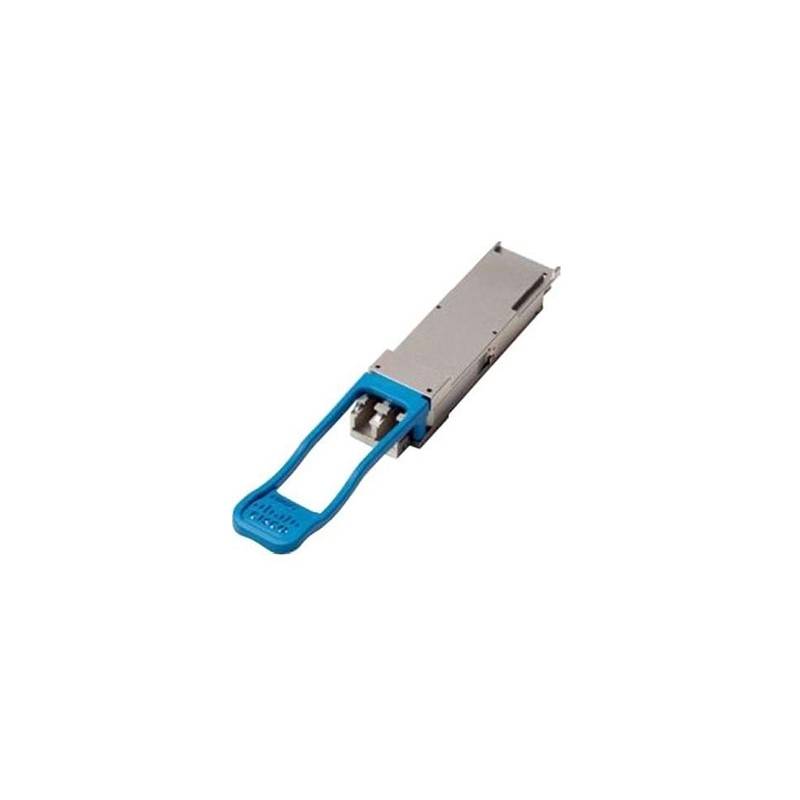In recent years, 100G fiber optics is gaining more attention and is being used in current and future network deployments. This Ethernet technology supports data speeds of up to 100 gigabits per second and is not designed just for higher speed but also for catering to specific market demands.
Since the first 100G standard got approved in 2010, dramatic changes have been made over these years. It is gradually taking place of 40G in data centers because of:
- Better standard follow-up
- Technical solution unification
- Industrial chain development
- High transmission rate and longer distance
Cisco 100G optical modules offer high-capacity transmission over a single wavelength fiber optic cable across longer distances.
Before the emergence of 25G/50G/100G, a traditional migration path was used that uses 10G-40G-100G, which was more expensive but less efficient. Upgrading to 25G to 100G is considered a more cost-effective solution. That’s why the demand for 100G fiber optics is continuously increasing.
Different Components Used in 100G Fiber Optics
Once Cisco 100G optical modules are deployed, a data center can run at 100Gbps. However, it can be difficult to understand all 100G fiber optics components.
So, here, we are sharing different module types and form factors so that you know what you need and what you are buying.
QSFP/QSFP28
While QSFP form factor optics has been the primary way of delivering 40GbE, they are also now being used for delivering 100GbE in QSFP28 form factor. They come with either MPO or L connectors.
- QSFP28 is the newer variant of QSFP and is specifically designed to support 100G. However, fundamentally, QSFP and QSFP28 are both the same form factors.
- LC variants can also be found on Bi-Directional (BiDi) Multi-mode QSFP so that they can use the existing OM3 or OM4 multi-mode fiber plants.
- MPO variants can be found for some single-mode QSFP transceivers that are used to break out 1x MPO/MTP port to multiple LC connections.
- A breakout mode is also supported by multi-mode QSFP transceivers usually.
Their different variants provide flexibility to continue using some older 10G fiber standards without the need for replacing fiber plants.
CFP
This form is also available in both 40GbE and 100GbE versions. It offers either MPO connectors for multi-mode fiber optics or SC connectors for single-mode optics. It is an older standard, which means the things you read above for QSFP or QSFP28 form don’t apply to the CFP form. Unlike QSFP/QSFP28 form factor, CFP provides a bigger form factor.
CFP2
It is an evolved form of CFP and has a smaller size of the module which is about half of the original CFP. At the time of its launch, it was known to increase interface density due to its smaller size and lower power consumption. However, both CFP and CFP2 forms are becoming legacy optics. Cisco supports only a handful of devices that support these forms as they are quickly being replaced by the QSFP28 standard for higher interface density applications.
CPAK
It is a Cisco-proprietary form factor that is specially designed to support more powerful and space-efficient 100GbE optics. When compared to CFP or CFP2 modules, it is an ideal choice for long-reach points such as 100GBase-LR4. An important thing to note is that CPAK is similar to CFP and CFP2 in terms of size and power consumption.
Is the Use of 100G Fiber Optics Common in the Industry?
Switching speeds are changing continuously. With serialized/deserialized (SERDES) speeds are changing and increasing dramatically from 10G through 25G, 50G, and 100G these days. It has been found that optics and SERDES speed experience increments in lockstep.
Higher switching speeds lead to higher network speeds, which naturally drive the demand and market growth of fiber optic network links. In turn, SERDES speeds of network switches are a determining factor to calculate the speed with which servers are connected to the network. So, it is considered that matching speeds end-to-end results in a more cost-effective and efficient network solution.
To support the increasing demand for faster speeds and higher efficiency, switches are also increasing in port density and moving from a top-of-rack (ToR) topology to one of the following configurations:
- Middle-of-Row (MoR)
- End-of-Row (EoR)
Therefore, it is becoming crucial to improve the ability to manage a large number of server attachments with greater efficiency.
As a result, accommodating this need in the server row demands new optic modules and structured cabling, such as those defined in the IEEE802.3cm standard. In addition to other things, this standard defines the benefits of pluggable transceivers when used with high-speed server network applications in large-scale data centers.
The changes in server row are complementary to the evolution of switch radix and switch capacity. When the demand for efficiency is higher, networks typically use higher radix application-specific integrated circuits (ASICs). Increasing ASIC input/output capability results in more network connections and reduces the number of switches required for a cloud-based network.
The need for low-cost fiber optics and decreased length between server connections are driving the demand and development of multimode fiber (MMF) transceivers with optic applications that deploy switch-to-switch and switch-to-server configurations.
A high bandwidth MMF provides you with so many benefits, such as increased speed, more efficient use of fibers, a greater variety of wavelengths, and more. Thus, using Cisco 100G optical modules instead of 10G or 40G improves fiber-use efficiency and link distances.
What’s more, the introduction of 100GI/Os is doubling switch port speeds. The same cabling strategies and higher bandwidth MMF is also supporting the transition to 400G and 800G modules. Do you need 100G fiber optic modules for your data center or business? Do you need any help with choosing the right Cisco 100G optical modules? If yes, connect with us via WhatsApp at +971585811786.

